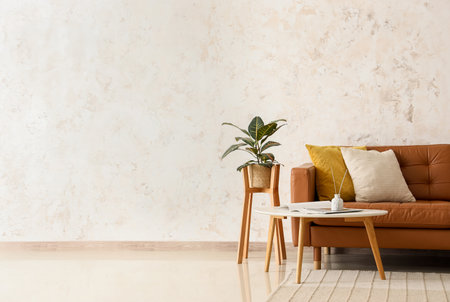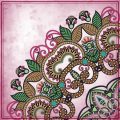Introduction to Indian Woods in Furniture Industry
The Indian furniture industry has long been shaped by the unique characteristics and enduring appeal of its native woods. From the bustling urban showrooms of Delhi and Mumbai to the artisan workshops in rural Rajasthan and Kerala, certain indigenous timbers have become synonymous with both quality and cultural identity. Among these, Sheesham (Indian Rosewood), Teak, Mango, and Sal stand out as the most preferred choices for furniture making, each holding a distinct place in India’s rich woodworking tradition.
Sheesham wood is widely celebrated for its remarkable strength and beautiful grain patterns, making it a staple in both traditional and modern furniture. Its prevalence across North India, especially in cities like Jaipur and Lucknow, reflects its deep-rooted association with royal heritage and classic craftsmanship. Teak, often dubbed the ‘King of Woods’ in India, is prized for its exceptional durability and water resistance. This wood is not only common in luxurious urban homes but also finds favour among coastal communities due to its resilience against humidity—a trait highly valued in metropolitan regions such as Chennai and Kochi.
Mango wood represents a more sustainable and affordable option, gaining traction in contemporary urban markets for its eco-friendly credentials and versatility. Its growing popularity highlights shifting consumer preferences towards green practices while maintaining a connection to indigenous resources. Meanwhile, Sal wood remains a trusted choice in rural India, known for its robustness and resistance to termites—a critical factor for furniture longevity in regions prone to pest infestations.
The selection of these woods is deeply influenced by regional traditions, availability, and climatic considerations, reinforcing their cultural relevance across diverse segments of the Indian population. As demand evolves in both urban penthouses and rural households, understanding the comparative strengths and water resistance of Sheesham, Teak, Mango, and Sal is essential for manufacturers and consumers alike who seek lasting value and aesthetic harmony in their furniture investments.
Strength Parameters: Key Indicators and Testing Methods
When assessing the suitability of Indian woods for furniture making, strength is a primary parameter that directly impacts durability and performance. In India, wood strength is measured using standardised metrics that are tailored to local conditions and requirements, considering regional climate variations and wood sourcing practices. Below is an overview of key indicators and testing methods commonly adopted in the Indian context.
Key Strength Indicators for Indian Woods
| Parameter | Description | Relevance in Furniture Making |
|---|---|---|
| Compressive Strength | Ability to withstand loads tending to reduce size | Critical for load-bearing furniture like beds and wardrobes |
| Bending Strength (Modulus of Rupture) | Resistance to breaking under flexural load | Important for shelves, tables, and seating surfaces |
| Hardness | Resistance to indentation and wear | Affects surface durability and scratch resistance |
| Tensile Strength | Capacity to resist pulling forces along the grain | Relevant in joinery and frame construction |
Common Testing Procedures in India
Indian laboratories and quality assurance agencies typically follow procedures outlined by the Bureau of Indian Standards (BIS) for wood testing. The most prevalent methods include:
- Universal Testing Machine (UTM): Used for compressive, tensile, and bending tests on standardized wood samples.
- Janka Hardness Test: Measures the force required to embed a steel ball into the wood, indicating surface hardness relevant for high-traffic furniture.
- Moisture Content Analysis: Utilizes electrical or oven-drying methods to determine the amount of water in the wood, which influences mechanical properties.
Factors Influencing Wood Durability in India
- Grain Structure: Tight and interlocked grains, as seen in Teak and Sheesham, enhance overall strength and resistance to splitting.
- Moisture Content: Optimal seasoning is crucial; high moisture can cause warping or fungal attacks, especially in humid regions like Kerala or West Bengal.
- Local Climate: Indian woods must be evaluated based on their performance under diverse climatic conditions—from coastal humidity to dry interiors—impacting both structural stability and longevity.
Cultural Note on Indian Practices
Traditional Indian carpentry often includes indigenous knowledge, such as air-drying techniques and selection of timber according to Vastu Shastra principles, which further influence the choice of woods for specific types of furniture. Understanding these parameters helps manufacturers deliver products that meet both modern quality benchmarks and local consumer expectations.

3. Water Resistance: Performance in Diverse Indian Conditions
India’s unique climate, characterized by high humidity and intense monsoon seasons, poses significant challenges for furniture makers in ensuring the longevity and durability of wooden pieces. The water resistance of Indian woods is not only determined by their natural properties but is also significantly enhanced by traditional carpentry techniques that have evolved to suit local environmental demands.
Monsoon Impact and Wood Selection
The annual monsoon brings heavy rainfall across most parts of India, making moisture ingress a critical concern in furniture making. Teak (Tectona grandis), celebrated for its dense grain and natural oils, remains the preferred choice for premium applications due to its superior resistance to swelling, warping, and fungal attacks. Sheesham (Dalbergia sissoo) also performs admirably under wet conditions, though it may require additional treatment compared to teak.
Humidity Considerations
Regions like Kerala and West Bengal experience persistent humidity year-round, which can lead to wood decay if not properly managed. Traditional Indian carpenters often employ indigenous methods such as seasoning wood under shade, applying natural resins, or using herbal pastes that act as moisture barriers. These practices are integral to enhancing the life span of woods like mango and neem, which are otherwise moderately water-resistant.
Techniques for Enhanced Water Resistance
In addition to careful material selection, Indian artisans leverage joinery styles such as dovetail and mortise-tenon joints that minimize gaps susceptible to water penetration. The use of shellac (lacquer derived from native insects) and linseed oil coatings further boosts resistance by forming protective layers on the wood surface. These time-tested methods complement modern waterproofing agents and sealants now available in urban markets, allowing manufacturers to meet diverse consumer needs from luxury villas in Mumbai to heritage homes in Rajasthan.
Ultimately, the synergy between the innate qualities of Indian woods and traditional enhancement techniques ensures that locally crafted furniture can withstand the rigours of India’s climatic extremes while retaining cultural authenticity and aesthetic appeal.
4. Comparative Analysis: Indian Woods vs. Imported Woods
When it comes to furniture making in India, the choice between locally sourced woods and imported varieties is often influenced by both practical requirements and cultural preferences. Indian homes and offices demand materials that can withstand diverse climatic conditions, especially high humidity during monsoons, while also delivering durability for long-term use. In this section, we present a comparative assessment of the strength and water resistance characteristics of popular Indian woods versus commonly imported alternatives.
Key Comparison Criteria
For Indian consumers and furniture manufacturers, two primary factors—strength and water resistance—play a decisive role in wood selection. Below is a table highlighting how leading Indian woods stack up against popular imported species on these parameters:
| Wood Type | Origin | Strength (Janka Rating) | Water Resistance | Suitability for Indian Climate |
|---|---|---|---|---|
| Teak (Sagwan) | India | Medium-High | Excellent | Highly Suitable |
| Sisoo (Indian Rosewood) | India | High | Good | Suitable |
| Mango Wood | India | Medium | Moderate | Moderately Suitable |
| Pine (Imported) | Europe/North America | Low-Medium | Poor to Moderate | Less Suitable (Prone to Warping) |
| Oak (Imported) | Europe/North America | High | Moderate-Good | Conditionally Suitable (Requires Treatment) |
| Burmese Teak (Imported) | Southeast Asia | High | Excellent | Highly Suitable but Expensive |
Cultural & Practical Preferences in India
The above comparison demonstrates that traditional Indian hardwoods like Teak and Sisoo not only offer superior water resistance and structural integrity but are also naturally adapted to local environmental conditions. These woods are preferred in Indian homes for their resilience against termites, humidity, and everyday wear-and-tear, all crucial factors given the typical usage patterns in Indian households.
The growing trend towards sustainable living has further boosted the popularity of locally available woods. In contrast, imported woods such as Pine or Oak may require special treatments or regular maintenance to achieve similar performance levels in India’s variable climate. Moreover, imported options can be costlier due to taxes and shipping, making them less accessible to the average consumer.
Conclusion of Comparative Assessment
The comparative analysis clearly highlights that Indian woods, particularly Teak and Sisoo, remain the most reliable choices for furniture manufacturing when considering strength and water resistance tailored for Indian usage. While some premium imported options like Burmese Teak perform equally well, they often come at a higher price point. For value-driven Indian customers seeking longevity and minimal maintenance, local woods continue to lead the market.
5. Eco-Friendly, Cost-effective, and Local Sourcing Trends
Sustainable Sourcing: Shaping the Indian Furniture Industry
In recent years, there has been a notable shift towards sustainable sourcing in India’s furniture sector. Manufacturers and consumers alike are increasingly aware of the environmental impact of timber harvesting. As a result, there is a strong preference for woods that are responsibly sourced from managed forests and plantations within India, such as Sheesham (Indian Rosewood), Mango wood, and Acacia. This trend not only supports forest conservation but also ensures the long-term availability of high-quality timber suitable for furniture making.
Cost Considerations: Balancing Quality and Affordability
Affordability remains a key factor in the selection of woods for Indian furniture. While premium options like Teak offer excellent strength and water resistance, their higher costs often push manufacturers to consider alternatives like Rubberwood or Mango wood, which provide reasonable durability at more accessible price points. The comparative study of Indian woods reveals that locally available species often deliver a competitive edge by reducing transportation costs and import duties, making them attractive both to producers and end-users.
Government Policies & Support for Local Wood Industries
The Government of India has implemented policies encouraging the use of indigenous wood species through initiatives such as promoting agroforestry and offering subsidies for plantation development. These measures aim to reduce dependence on imported timbers and foster self-reliance in the domestic market. Certifications like FSI (Forest Survey of India) and CITES compliance also guide responsible sourcing practices, ensuring legal and eco-friendly procurement.
Consumer Preferences: Embracing “Made in India” Sustainability
Modern Indian consumers are increasingly drawn to furniture that combines sustainability with cultural authenticity. There is growing demand for products labelled as ‘eco-friendly’ or ‘locally sourced’, particularly among urban millennials and environmentally conscious buyers. The emphasis on strength and water resistance continues, but now it is balanced with an interest in green credentials—making woods like Neem, Bamboo, and reclaimed timber popular choices in contemporary design. This evolving mindset aligns perfectly with the global movement towards sustainable living while celebrating India’s rich natural resources.
6. Conclusion: Recommendations for Indian Furniture Manufacturers
In light of our comparative study on the strength and water resistance of popular Indian woods used in furniture making, several crucial insights have emerged that can shape the future strategies of Indian furniture manufacturers. To achieve a balance between quality, durability, and market differentiation—both in the Indian context and globally—the following actionable recommendations are synthesised from the key findings:
Embrace Local Hardwood Varieties for Core Strength
Indian hardwoods such as Teak (Sagwan), Sheesham (Indian Rosewood), and Sal have demonstrated exceptional structural integrity and longevity under stress. Manufacturers should prioritise these species for load-bearing components and high-use surfaces to guarantee robust products that withstand daily wear and tear typical in Indian households.
Enhance Water Resistance through Treatment & Innovation
While woods like Teak naturally repel moisture due to their oil content, other commonly used varieties such as Mango or Acacia may require additional protective treatments. Investing in advanced seasoning techniques, eco-friendly sealants, and chemical preservatives will help enhance water resistance, especially crucial for furniture exposed to monsoon climates or humid environments prevalent across India.
Promote Sustainable Sourcing & Responsible Forestry
The global market is increasingly valuing sustainable practices. Indian manufacturers should focus on certified timber sourcing, utilising plantation-grown wood where possible, and actively participating in reforestation initiatives. This not only preserves indigenous forests but also appeals to environmentally conscious consumers both domestically and internationally.
Diversify Offerings with Engineered Wood Solutions
Engineered woods like plywood, MDF, and blockboard present cost-effective alternatives with good dimensional stability. By blending traditional craftsmanship with modern materials, manufacturers can cater to diverse price points while maintaining acceptable strength and moisture performance for urban consumers seeking affordable quality.
Leverage Traditional Craftsmanship with Modern Design
Indias rich legacy of artisanal woodworking is a distinct competitive advantage. Merging this heritage with contemporary aesthetics and ergonomic designs can differentiate brands in both premium and mass-market segments. Export-oriented manufacturers should adapt finishes and styles to suit regional preferences abroad while retaining an authentic Indian touch.
Conclusion: Building a Future-Ready Furniture Industry
To succeed in a rapidly evolving marketplace, Indian furniture makers must combine scientific material selection with innovative processing, sustainable sourcing, and design-led thinking. By focusing on the optimal use of indigenous woods—backed by technology and tradition—they can deliver superior products that resonate with the aspirations of both Indian families and discerning global buyers.


